Is London’s Contentious Ultra Low Emissions Zone a Sign of Things to Come?

The mayor of London, Sadiq Khan, has been under fire for pushing ahead with the Ultra Low Emission Zone (ULEZ) expansion poised to encompass the entire city and its surrounding suburbs. Critics have said the decision will effectively force poorer residents to buy brand-new automobiles capable of passing modern emission standards or confront daily congestion charges as they attempt to motor around town.
While London was already notorious for charging vehicles attempting to use its roads ( Top Gear did numerous segments on the subject when it was a better program), it’s also become a trendsetter for Western cities where leadership hoping to curtail traffic and rake in money under the auspices of safety and/or environmentalism. If you’re a New Yorker annoyed with its upcoming congestion charging scheme or the current automated tolling systems that nickel-and-dime you during daily commutes, you can thank London for helping to pioneer those technologies. Living in Chicago and annoyed with the constantly expanding role of traffic cameras? Londoners have already waged that war, too.
With the above in mind, it might be wise to pay attention to what’s happening in the United Kingdom in terms of traffic regulation. Because it’s likely to make its way here in a few years. Though to be fair, the most recent regulatory actions we’ve seen being taken inside of Europe actually seem to have been piloted by Chinese traffic enforcement centers using regional camera networks. In fact, the new driving restrictions are actually dependent on surveillance hubs designed to track vehicles that are currently being installed by the city.
With London’s ULEZ scheduled to expand at the end of August, motorists hoping to dodge the £12.50 charge will be required to own a vehicle that passes the 2005 Euro 4 emissions standard for gasoline-powered cars or the 2015 Euro 6 standard if they happen to be driving a diesel. According to Autocar, numerous motoring groups have expressed their dismay at the proposal – claiming that the arrangement effectively forces people to buy new automobiles. Their grievances focus on the fact that having to manufacture a new vehicle is substantially less eco-friendly than maintaining an older one and allegations that the government is effectively creating business for carmakers on the backs of taxpayers.
The British Automobile Association (AA) has claimed that over 400,000 cars will be affected by the new rules and forced to decide whether to buy a new car or pay the city £12.50 just to leave their driveway. While the upcoming regulations do come with a “scrappage” plan akin to the cash-for-clunkers debacle witnessed in the United States during the previous recession, criticisms have focused on how the money benefits automakers more than London residents.
Under the scheme, up to £5,000 per claimant is available to purchase a new automobile, although the standard allowance is only £2,000. Though those hoping to get five grand have to prove they’ll be getting rid of a wheelchair-accessible vehicle, whereas those seeking two grand need to be receiving certain low-income or disability benefits to qualify. Everyone else is on their own.
From Autocar:
Luke Bosdet, an AA spokesman, said: "This is a much higher figure, and we're concerned that by only providing relief for people on benefits, the scrappage allowance excludes those on low incomes juggling multiple jobs, as well as those in the care sector who need their cars to visit patients."
The [Royal Automobile Club] questioned the timing of the ULEZ extension. Nicholas Lyes, head of roads policy, said: "We're concerned that expansion is taking place when drivers are already struggling with high fuel costs. We urge the mayor to look at expanding the scrappage scheme to benefit more households. Alternatively, residents should be granted a sunset period until August 2024 to give them more time to upgrade.”
Vehicle valuation experts questioned the value of the £2,000 scrappage allowance.
Dylan Setterfield, head of forecast strategy and operations at Cap HPI, said: "The £2,000 available to some Londoners via the scheme is unlikely to be enough to enable the purchase of a car which meets the current criteria to avoid the ULEZ charge."
The plan launched on Monday, with the government expecting 30,000 people to access the aforementioned payouts. While that means there will be hundreds of thousands who have to go without government assistance, London does offer charities and businesses up to £9,500 to replace or retrofit their old vehicles – which hardly seems fair to the citizenry. Transport for London has said it will also begin offering large incentives for people to switch from vehicle ownership entirely, including discounts on rental for cars, bicycles, and public transportation options.
“It’s really important that we don’t dither or delay and take action to clean up the air,” Mayor Khan said during a press event held in Enfield. “We’ve seen the benefits in central and inner London. Thousands made the transition to not using vehicles or going to cleaner vehicles.”
“Here in Enfield, this borough, there are 150 premature deaths a year, 150 bereaved families a year, because of this deadly air. I don’t want anyone to come to our city and breathe in poison.”
However, according to The Guardian, a number of London neighborhoods have expressed severe concerns about the plan. In fact, a majority of citizens responding to Transport for London’s consultation actually oppose the Ultra Low Emission Zone scheme. The boroughs of Bexley, Bromley, Hillingdon, and Harrow have likewise announced plans to take legal action to force a possible judicial review and there’s a coalition of citizens vowing to block the city from putting up any enforcement cameras that would make the ULEZ expansion impossible – mimicking the previous war UK citizens waged on speed cameras.
Khan has said he’s representing the silent majority and has reportedly compared the issue to smoking bans instituted over a decade ago. “In a few years time we’ll be looking back, thinking it’s ridiculous that you could have vehicles driving around our city churning out poison,” the mayor said.
He has likewise chided those opposing the expansion plan, saying they should petition the government rather than spend tax funds to launch a legal war against ULEZ. “It’s unacceptable that there are 4,000 deaths a year,” he asserted. “The easy thing to do would be to kick the can down the road – but I’m not willing to delay.”
If you’re wondering about the possibility of similar laws coming to North America, it’s certainly not outside the realm of possibility. Despite Canada having one of the lowest population densities in the developed world, Vancouver introduced congestion charging in 2020 and Toronto appears to be next up. While the United States also has a handful of cities running with congestion fees, most of these exist on heavily used toll roads and are focused on reducing traffic whenever it spikes. However, New York City has recently introduced daily fees to anybody attempting to drive through lower Manhattan. This is in addition to the tolls associated with the city’s many bridges and tunnels. Enforcement is slated to go into effect later this year.
"Congestion pricing is good for the environment, good for public transit and good for New York and the region," Manhattan Transit Authority CEO Janno Lieber said in 2022.
The plan is expected to dramatically increase dependency on MTA subway cars and buses while decreasing the number of vehicles operating in Manhattan by 20 percent.
What say you? Are these schemes necessary to help reduce traffic and improve urban air quality or is this just an easy way for cities to make money while oppressing drivers that don't occupy the upper echelon of the socioeconomic pyramid? Would you want to see something like London's expansive ULEZ where you live or would you start breaking out tools to help disassemble enforcement cameras?
[Image: Alena Veasey/Shutterstock]
Become a TTAC insider. Get the latest news, features, TTAC takes, and everything else that gets to the truth about cars first by subscribing to our newsletter.

A staunch consumer advocate tracking industry trends and regulation. Before joining TTAC, Matt spent a decade working for marketing and research firms based in NYC. Clients included several of the world’s largest automakers, global tire brands, and aftermarket part suppliers. Dissatisfied with the corporate world and resentful of having to wear suits everyday, he pivoted to writing about cars. Since then, that man has become an ardent supporter of the right-to-repair movement, been interviewed on the auto industry by national radio broadcasts, driven more rental cars than anyone ever should, participated in amateur rallying events, and received the requisite minimum training as sanctioned by the SCCA. Handy with a wrench, Matt grew up surrounded by Detroit auto workers and managed to get a pizza delivery job before he was legally eligible. He later found himself driving box trucks through Manhattan, guaranteeing future sympathy for actual truckers. He continues to conduct research pertaining to the automotive sector as an independent contractor and has since moved back to his native Michigan, closer to where the cars are born. A contrarian, Matt claims to prefer understeer — stating that front and all-wheel drive vehicles cater best to his driving style.
More by Matt Posky
Latest Car Reviews
Read moreLatest Product Reviews
Read moreRecent Comments
- Daniel J Cx-5 lol. It's why we have one. I love hybrids but the engine in the RAV4 is just loud and obnoxious when it fires up.
- Oberkanone CX-5 diesel.
- Oberkanone Autonomous cars are afraid of us.
- Theflyersfan I always thought this gen XC90 could be compared to Mercedes' first-gen M-class. Everyone in every suburban family in every moderate-upper-class neighborhood got one and they were both a dumpster fire of quality. It's looking like Volvo finally worked out the quality issues, but that was a bad launch. And now I shall sound like every car site commenter over the last 25 years and say that Volvo all but killed their excellent line of wagons and replaced them with unreliable, overweight wagons on stilts just so some "I'll be famous on TikTok someday" mom won't be seen in a wagon or minivan dropping the rug rats off at school.
- Theflyersfan For the stop-and-go slog when sitting on something like The 405 or The Capital Beltway, sure. It's slow and there's time to react if something goes wrong. 85 mph in Texas with lane restriping and construction coming up? Not a chance. Radar cruise control is already glitchy enough with uneven distances, lane keeping assist is so hyperactive that it's turned off, and auto-braking's sole purpose is to launch loose objects in the car forward. Put them together and what could go wrong???





















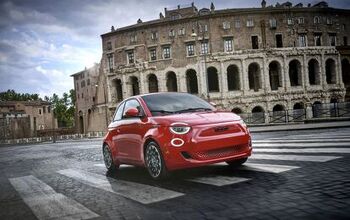
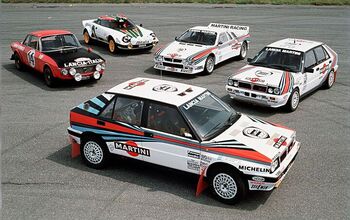


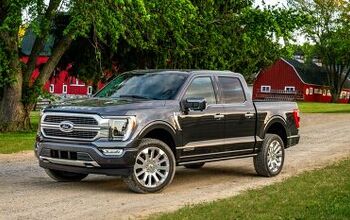
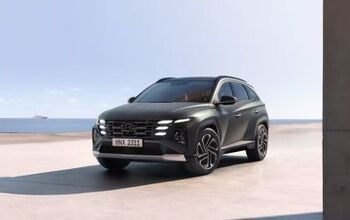
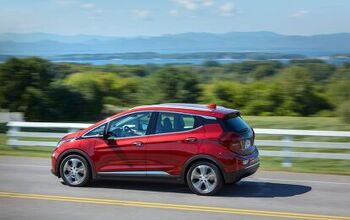

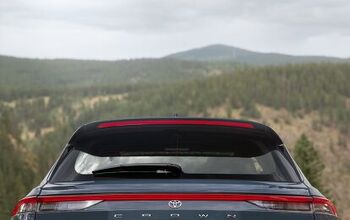


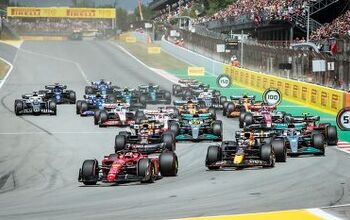
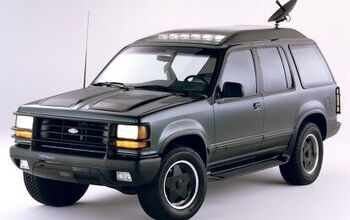
Comments
Join the conversation
Matt Posky--You have not answered my question as to why you moved from New York City? Did you enjoy driving there? I cannot imagine why anyone would want to drive there but I understand why people have to especially if it is there profession (cabby, delivery driver, and limo driver).
In larger cities that have decent public transportation systems (Chicago, New York, Boston, Minneapolis, etc) I think it will happen at some level, or they will just make it so expensive to actually operate or park a vehicle in the region, people will simply stop driving rather than pay the price. However, these cities are well aware, you go to hard to fast without the infrastructure to back it up, you will become a dying city (think Pittsburg or Detroit).